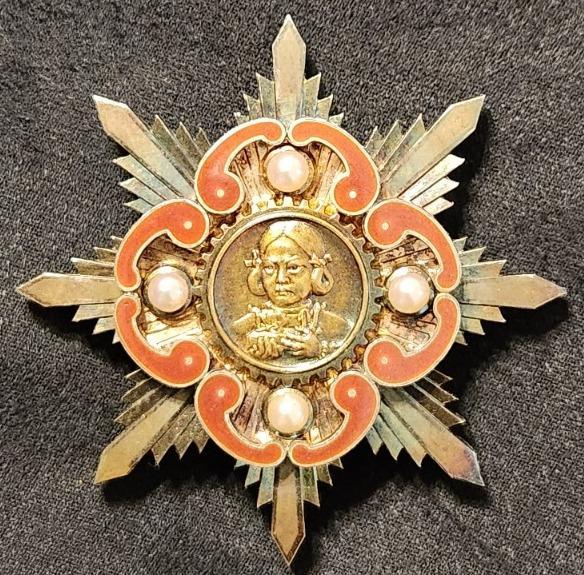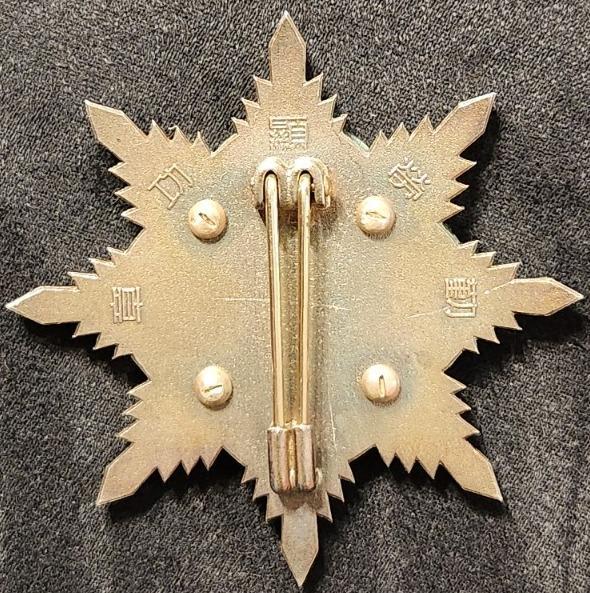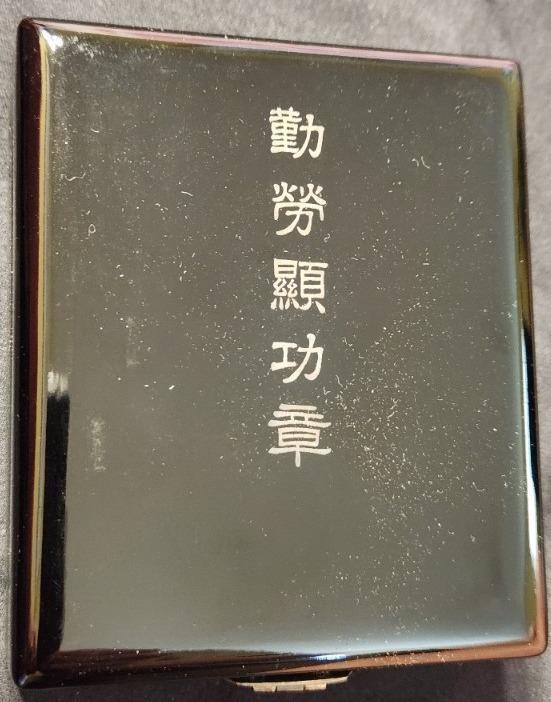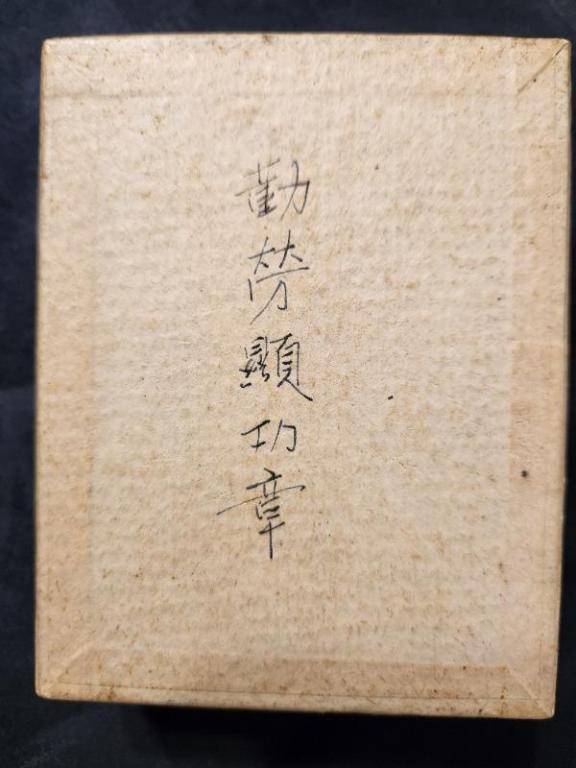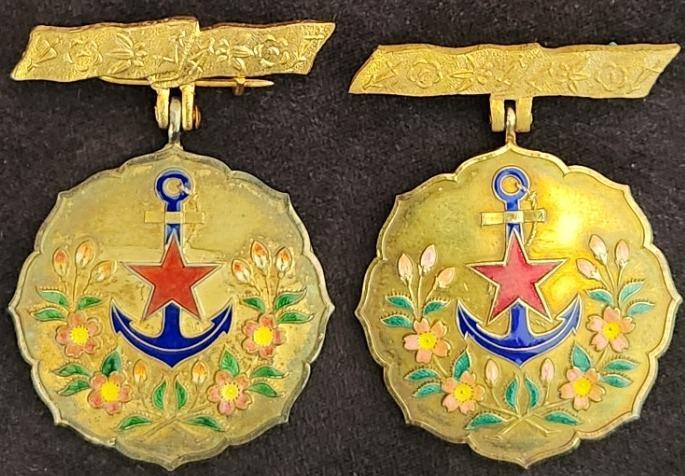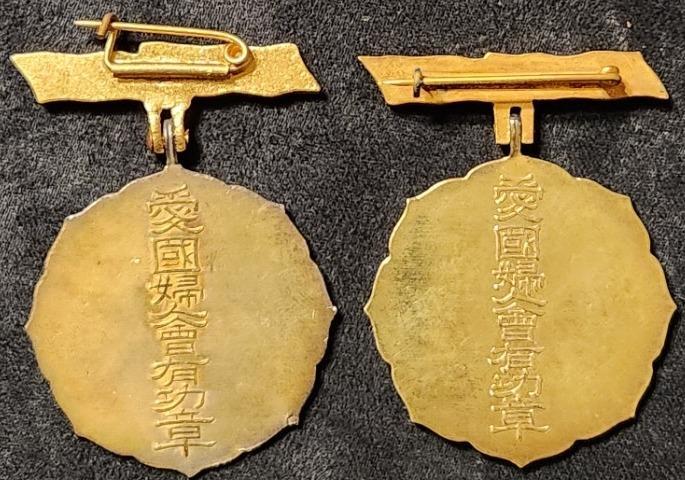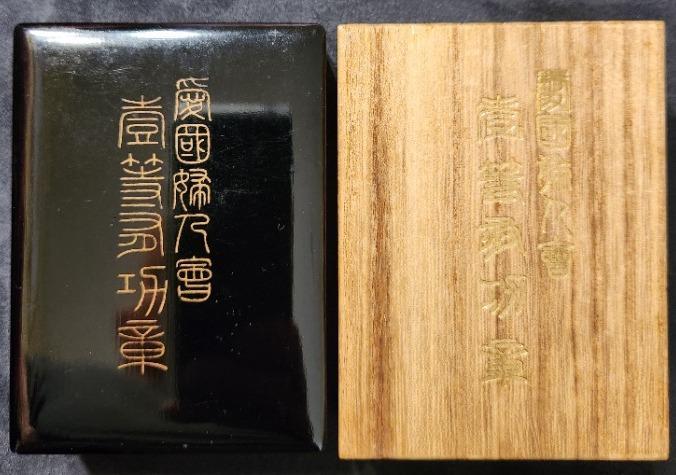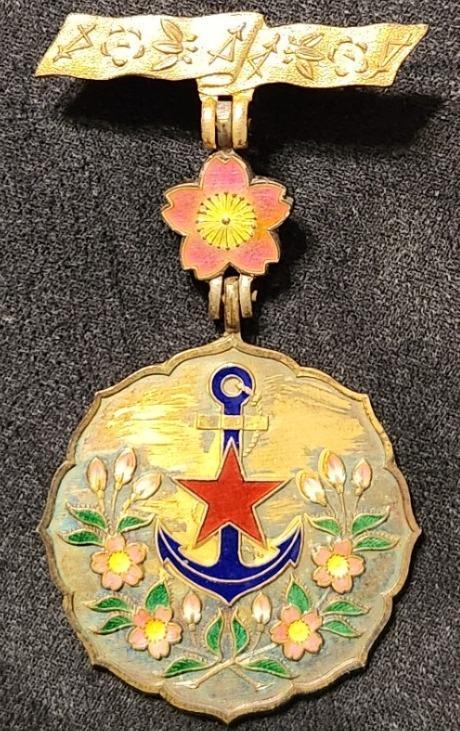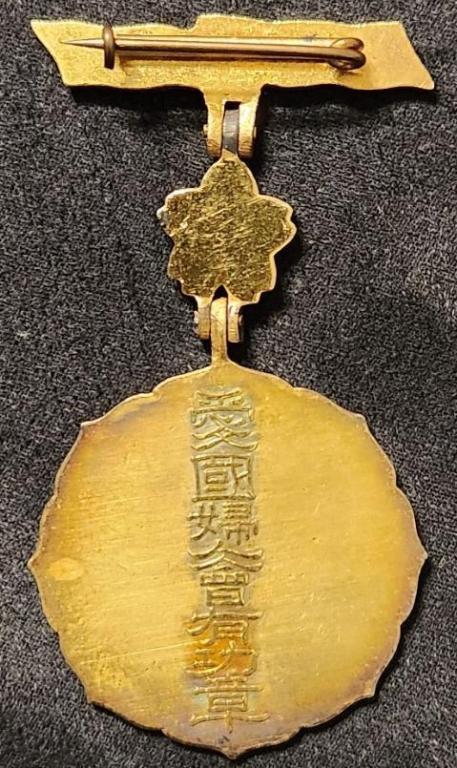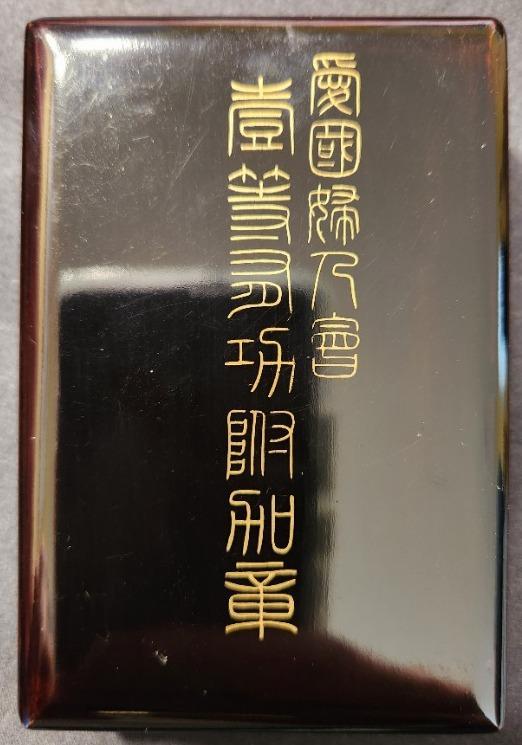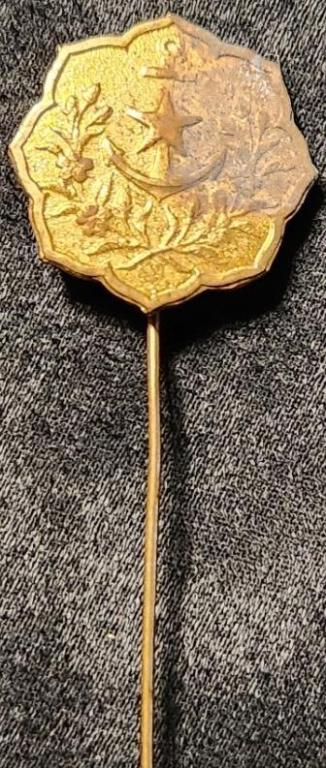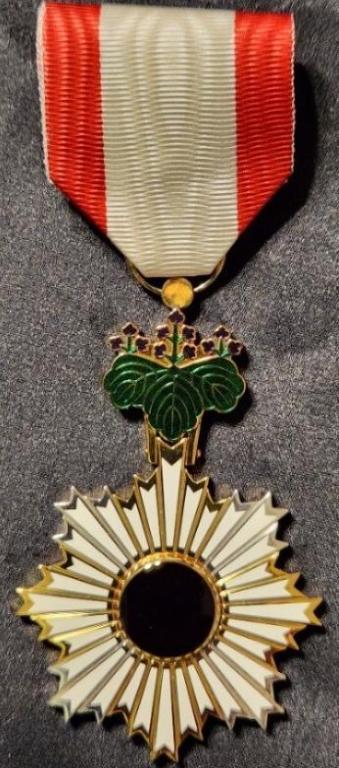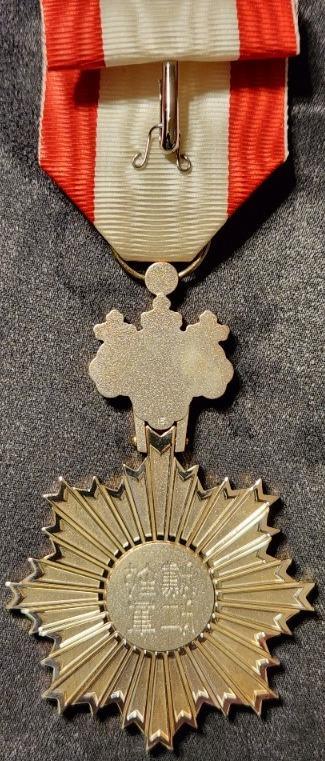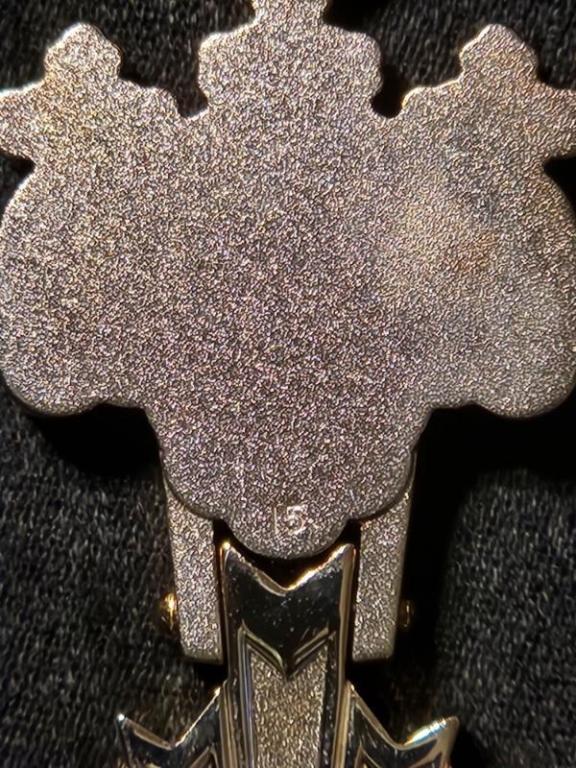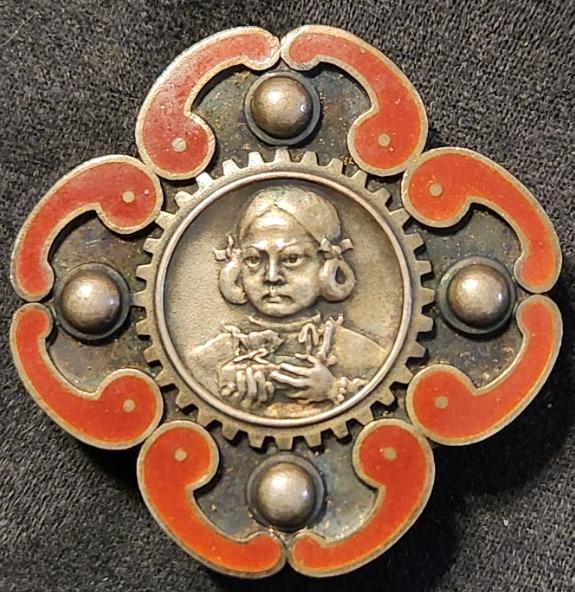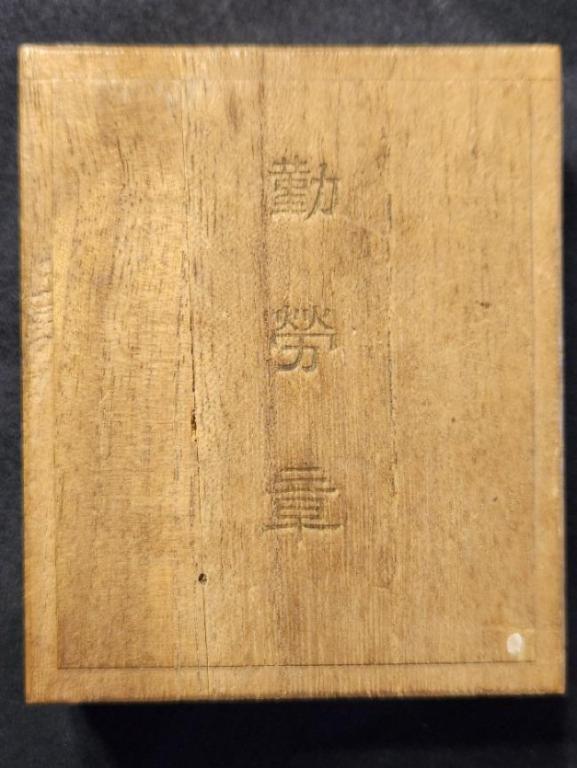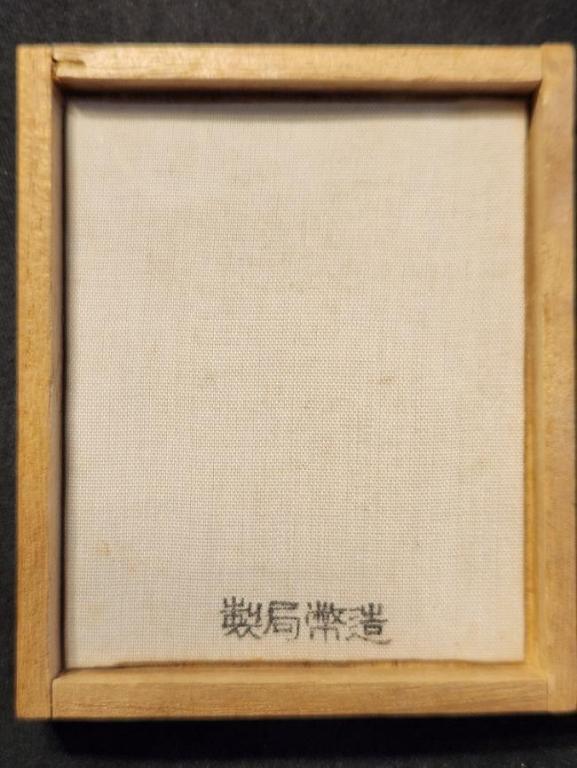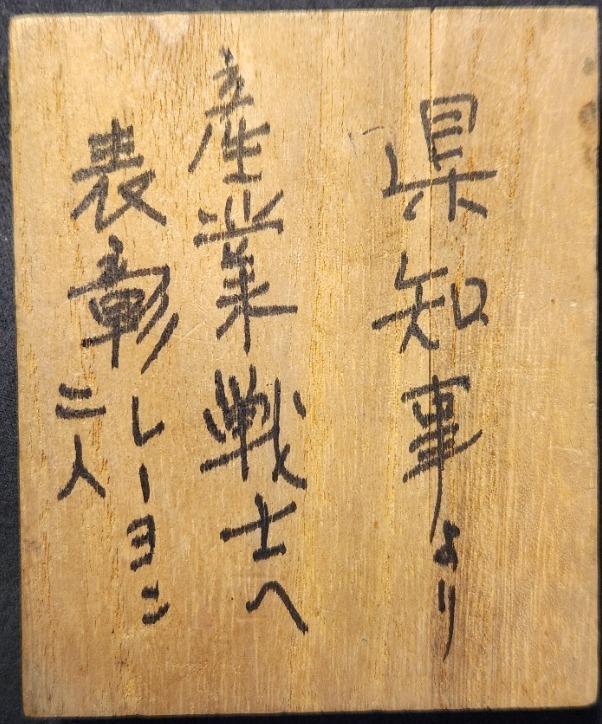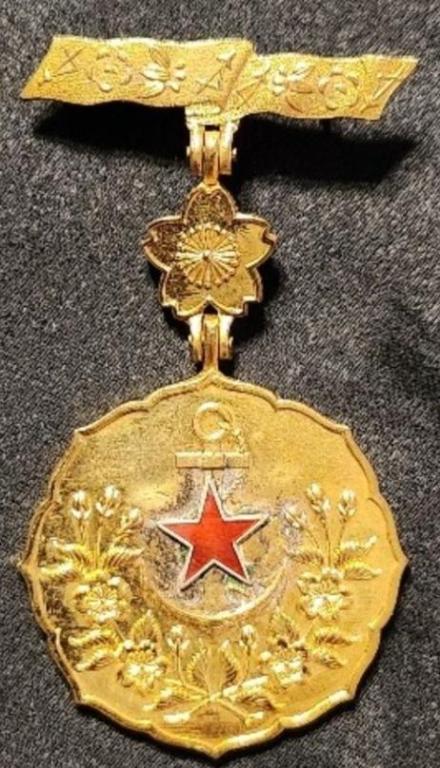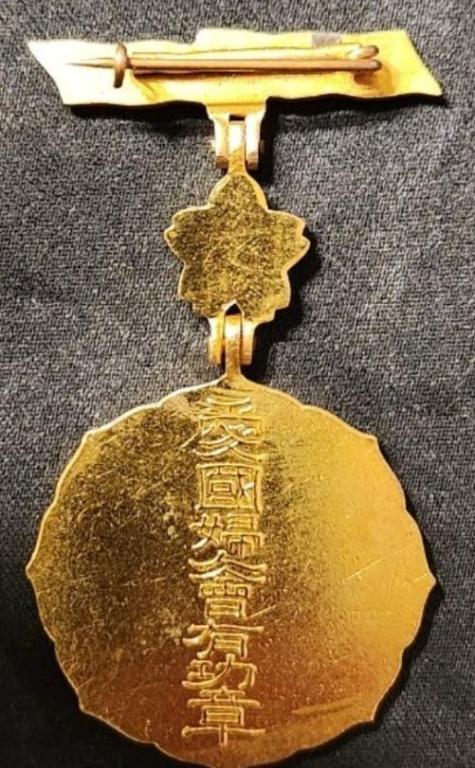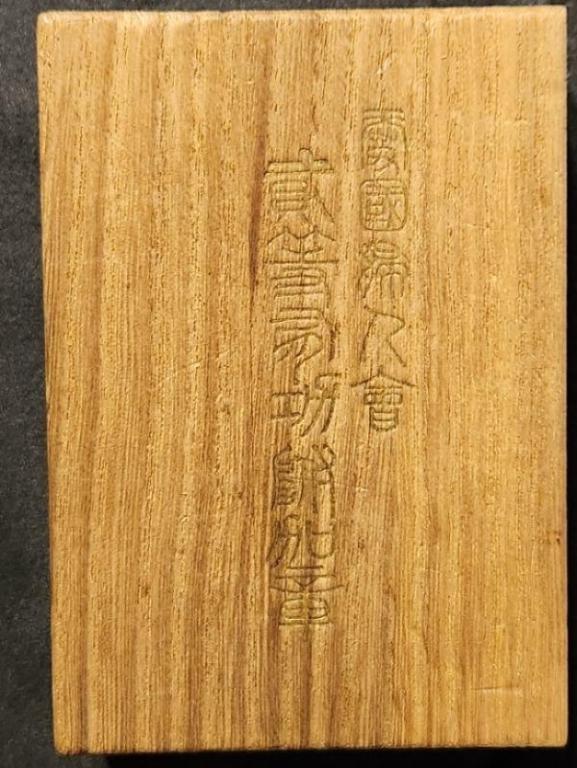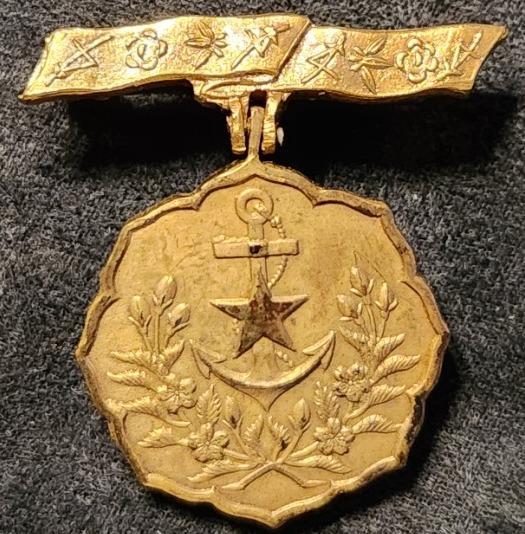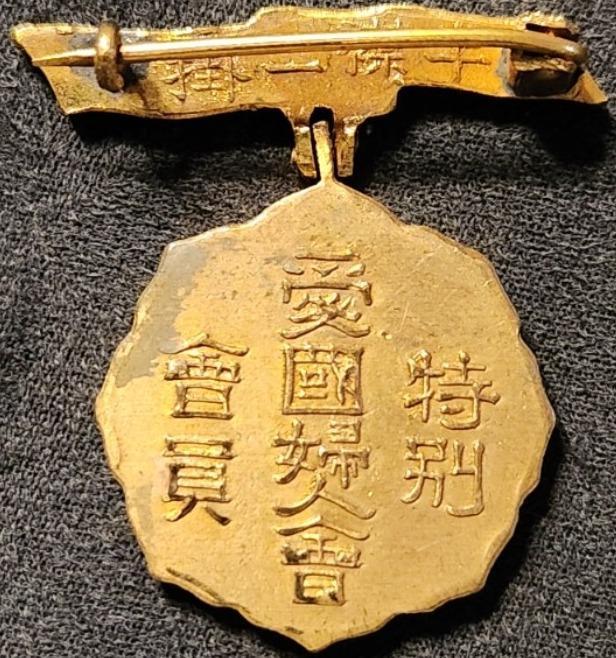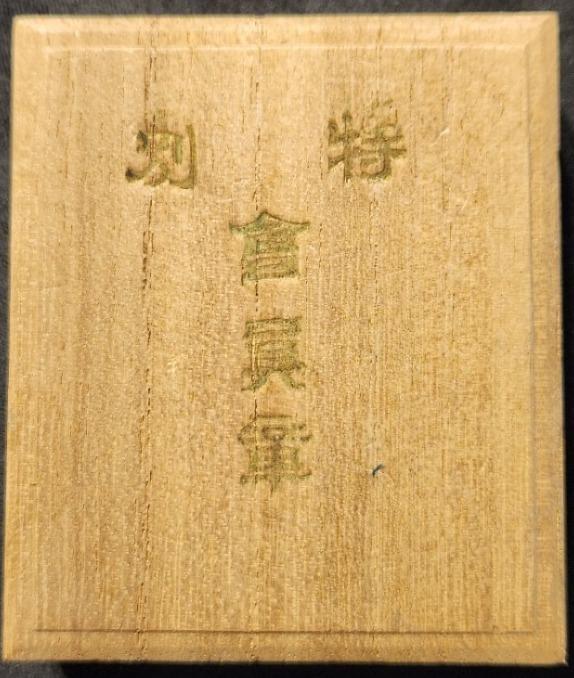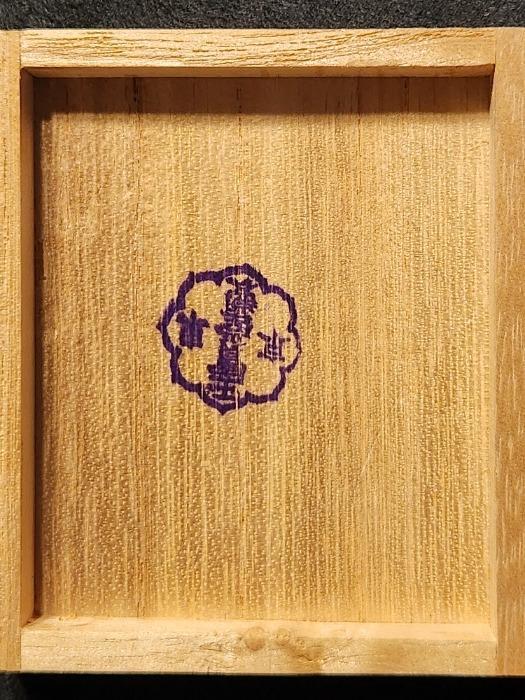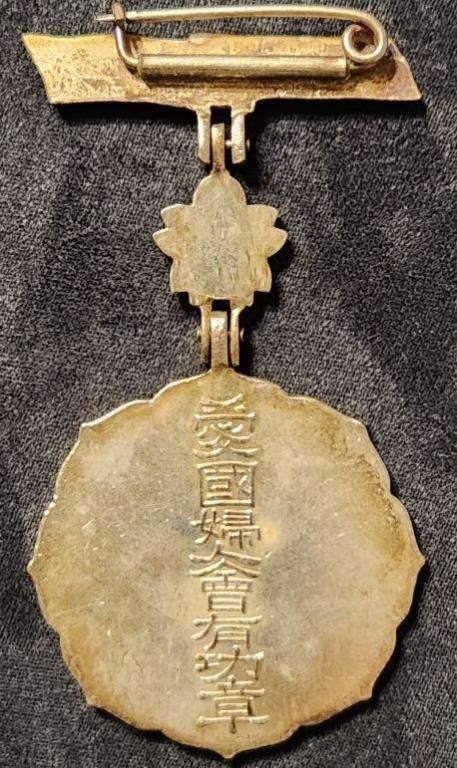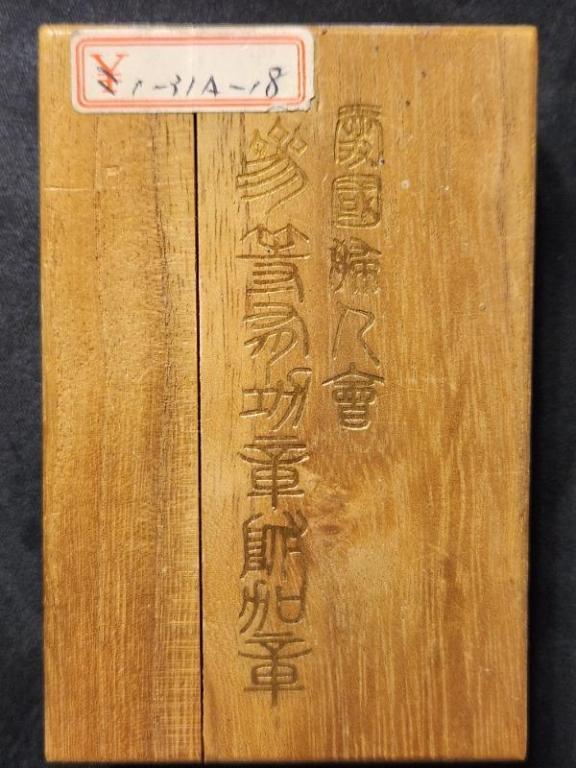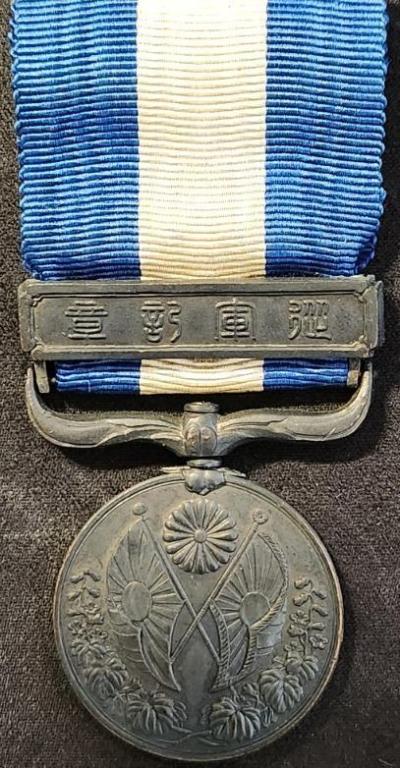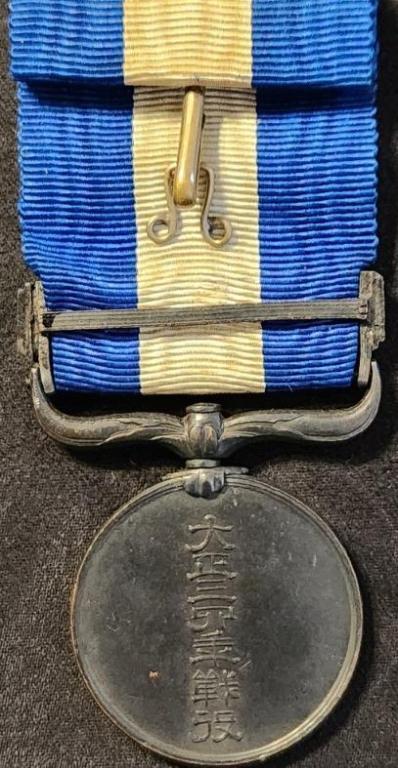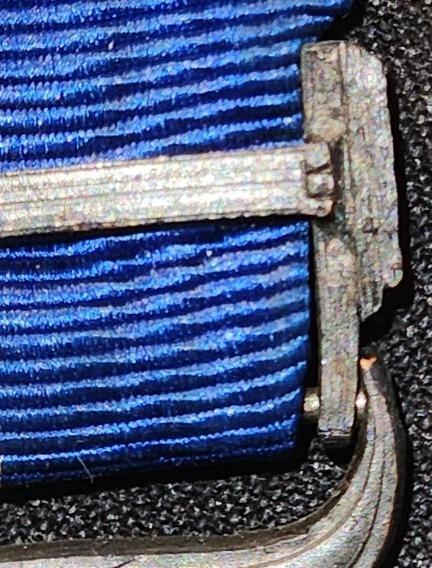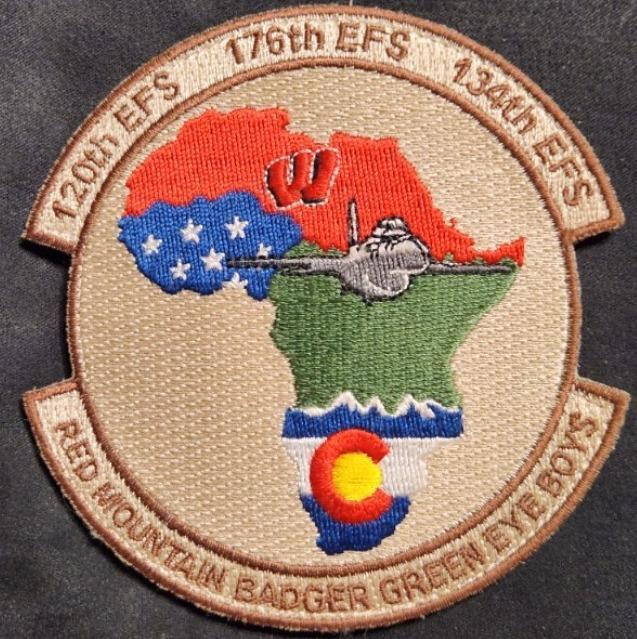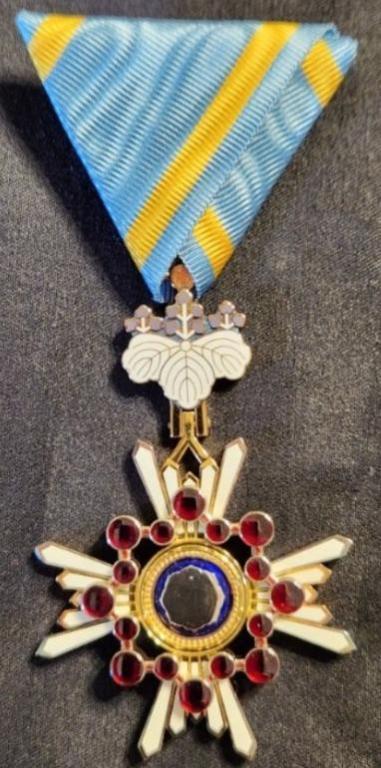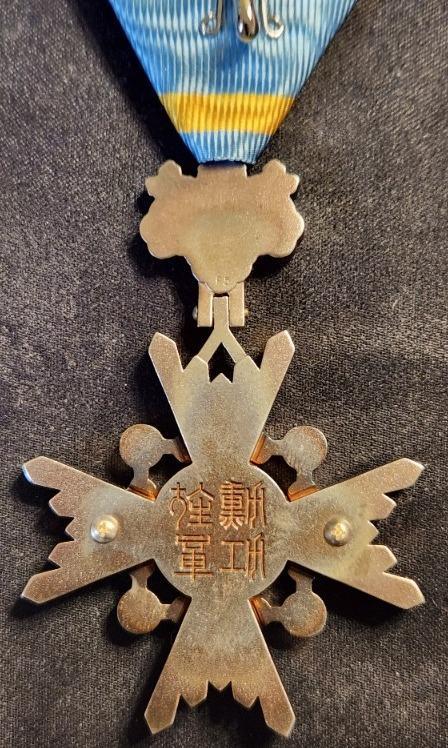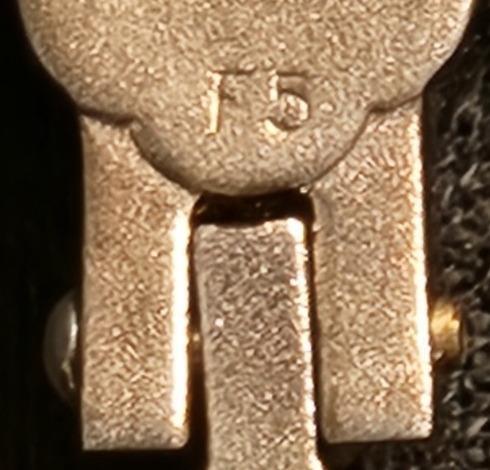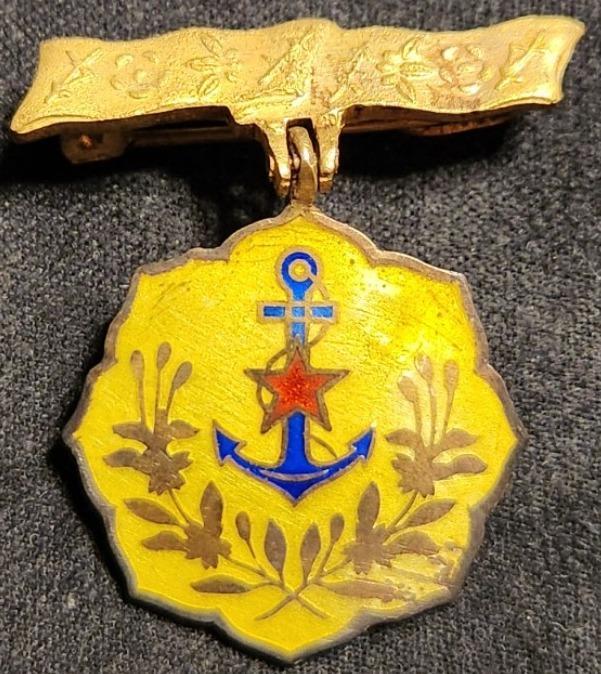-
Posts
468 -
Joined
-
Last visited
-
Days Won
20
Content Type
Profiles
Forums
Blogs
Gallery
Events
Store
Everything posted by TracA
-
I have been able to obtain a wonderful cased Labor Merit Badge, which also included an outer heavy stock cardboard box with the same kanji on the lid as are on the lid of the lacquered case. I have no idea if this is the actual cardboard box in which the lacquered cases for such badges came, or if this cardboard box was privately procured after the badge was awarded. To me the kanji on the lid of the cardboard box appear as if they could be handwritten instead of printed. The central badge measures 47mm from tip of long ray to tip of long ray. There are 56 total rays with four single long rays at 3h, 6h, 9h, and 12h and another four single long rays in between. Grouped around each long ray are six short rays, three on either side. Inside the tomoe crest at 3h, 6h, 9h, and 12h are four pearls. The circular gear-like device, the goddess, and the rays inside the tomoe crest are gilt; the rays outside are silver. Thye do not appear to have been gilt that has tarnished off. The reverse is silver. It is a striking badge. Tracy Obverse: Reverse: inscription on the badge is, counter clockwise from 3h to 9h, 勤勞顯功章 for Labor Merit Badge. Lacquered case lid with the same kanji as on the reverse of the badge: The cardboard box in which the case was nested:
-
No One, Wonderful medal, case, and award certificate. It is indeed satisfying to "have all of the pieces", so-to-speak. All the best, Tracy
-
Below are two First Class Merit Badges, for recruiting more than 300 new members, which I believe might represent two different versions. For the sake of argument I will assume that each badge was issued in the case/box in which it was purchased. The first difference is between the boxes. Murphy and Ackley, p. 59, state that First Class Merit Badges came in lacquered cases while Second and Third Class came in wooden boxes. However, although one of my First Class Merit Badges came in a lacquered case the other came in a wooden box. The kanji and the dimensions are the same. It appears to me that the wooden box is in the same style of construction and inscription as other boxed WPA badges (of different ranks) that I have. So, I don’t think that the wooden box was privately commissioned/purchased, although I do not have direct evidence that it was not. Perhaps the wooden box is what is commonly referred to as “late war economy”? The second, third, and fourth differences pertain to the badges: The flower petals on the badge that came in the lacquered case are more reddish than pink in color than the flower petals on the badge that came in the wooden box. The fastening pins on the back of the suspension bars are different. On the badge that came in the lacquered case the tube through which the pin is threaded is 12 mm long and the pin itself from the tip to the two circle end is 18 mm long. On the badge that came in the wooden box the tube through which the pin is threaded is 19 mm long and the pin itself from the tip to the two circle end is 24 mm long. Although the pin on the badge from the wooden box looks as if it is itself affixed to the reverse of the suspension bar, it too is threaded through a tube. However, it is threaded so tightly that the pin does not rotate at all. The hanger from the suspension bar to the badge that came in the lacquered case is slightly longer than that of the badge that came in the wooden box. Whether they truly represent two distinct versions or not, the badge itself is beautiful. Tracy Obverses side-by-side. The left is the badge from the lacquered case and the right is the badge from the wooden box. Note the difference in the color of the petal enamel. Although it looks as if the badges and suspension bars are slightly different sizes I measured them in multiple places as best as I could (not owning calipers) and they are the same size. Reverses side-by-side. Again, left is the badge from the lacquered case and right is the badge from the wooden box. Note the difference in pin fasteners. 愛國婦人會有功章 for Women’s Patriotic Association Merit Badge. The two lids side-by-side. The right column is 愛國婦人會 for Women’s Patriotic Association and the center column is 壹等有功章 for First Class Merit Badge. No matter how much I tried I could not get the kanji on the wooden lid to stand out more.
-
…and my latest installment: a First Class Merit Badge with Attachment. This was for recruiting more than 500 new members. The badge is 31.75 mm in diameter with a suspender bar of the same width. The badge is gilt and enamel, with the anchor in navy and the star in red, and the cherry blossom wreath enameled in green, pink, and yellow. The attachment is in the form of a 9.525 mm diameter cherry blossom between the suspender bar and the badge, enameled pink and yellow. The lacquered case is 66.675 mm wide x 92.075 mm long. A former owner of this badge clearly tried to clean off the tarnish on the obverse. I like to leave in place such evidence of the aging process. Tracy Obverse: Reverse with a single column inscription of 愛國婦人會有功章 for Women’s Patriotic Association Merit Badge: Lacquered case lid (please excuse the cell phone reflection) with a two column inscription in gilt kanji. Right column of 愛國婦人會 for Women’s Patriotic Association and central column of 壹等有功附加章 for First Class Merit Badge With Attachment:
-
Greetings, I have a new addition to this topic. I just picked-up a Supporting Member Badge, unfortunately without the white matchbox style cardboard box (per Murphy and Ackley, p. 58). This badge is a stickpin. The obverse has some dark brown discoloration on the obverse from about 12h to 3h. Enjoy. Tracy Obverse: Reverse: top character on the left column read before the bottom character on the right column for 愛國婦人會, Women’s Patriotic Association. The remaining three characters on the left column are 賛助員 for Supporter/Supporting Member.
-
Another addition to this topic, which just arrived today. A post-2003 reform Order of the Rising Sun Gold and Silver Rays (former 5th class). On the reverse the hallmark l5 is stamped at the bottom of the paulownia leaf at 6h. The obverse is the same as the pre-2003 reform version with the exception of the piece attaching the badge to the ribbon ring. That piece is no longer a ball or knob. Rather, it is a disc that has a larger diameter than its thickness. The reverse is no longer an enameled mirror of the obverse, with the “Order of Merit” seal characters on the reverse of the paulownia leaves. The reverse is now pebbled silver, no enamel, and the reverse of the paulownia leaves and flowers is simply flat. The seal characters are where the red “sun” cabochon was located on the pre-2003 orders. My cellphone photo of the obverse really does not do the medal justice, as the lighting was quite harsh. Tracy Obverse: Reverse: Hallmark:
-
Over a year later I would like to add something to this thread. No new information, but my Labor Badge, with box, and a question. The only information that I can find on this badge is from Rich Catalano’s old Dai Nippon site, via the Wayback Machine: https://web.archive.org/web/20200731053553/http://www.imperialjapanmedalsandbadges.com/laborbadge.html. I find this badge beautiful in its simplicity. The badge measures 3 mm and the wooden box measures 76.2 mm in length and 63.5 mm in width. When this thread was first brought to my attention by Azyeoman I was enchanted with the badge. In particular, the goddess or god-figure in the center. She does not have a particularly friendly or benign look on her face. In fact, her expression is stern or outright harsh. In addition, I just can’t figure out or imagine what she is holding in her hands. Here is my question: on the bottom of the box is handwriting that I at first assumed was Japanese but then thought it might be Korean, but am now unsure. If someone would be able to translate the writing, then I would be deeply appreciative. Thank you. Tracy Obverse: Reverse, with the inscription 勤労章, Labor Badge: Box lid with the inscription 勤労章 in gilt: Bottom of the inside of the box lid, with 製局幣造, Made by the Bureau of the Mint: Finally, the bottom of the box. Any help translating this would be greatly appreciated:
-
Greetings, A new entry for this topic. My Second Class Merit Badge with Attachment. The attachment was awarded for recruiting more than 200 new members. The badge is 1.25 inches in diameter with a suspender bar of the same width. The attachment is in the form of a .375 inch diameter cherry blossom between the suspender bar and the badge. Gilt color with a red star. The box is wood, 2.75 inches wide x 4 inches long. I hope that you enjoy. Tracy Obverse: Reverse with a single, central column inscription 愛國婦人會有功章, Women’s Patriotic Association Merit Badge: Box lid with a two column inscription in gilt kanji. The right column reads 愛國婦人會, Women’s Patriotic Association and the central column reads 貮等有功章附加章, Second Class Merit Badge With Attachment:
-
I have recently obtained a WPA Special Member badge. Dimensions and construction are like the Regular Member badge except that the Special Member badge is in gilt. The example that I obtained has the Gyokuhō workshop stamp on the inside of the box lid. Some pictures below. Enjoy. Tracy Obverse: On the reverse the inscription on the badge is in three columns: center column is 愛國婦人會 for “Women’s Patriotic Association”; left column is 会員 for “member”; right column is 特別 for “special”. On the reverse of the suspension pin back is 掛ー襟半 for “hanging collar half” or “to wear badge on kimono half-collar.” (Thank you JapanX!). Box lid with the following inscription: 特別 “special” across the top and 会員章 “member badge” down the center. Gyokuhō workshop stamp on the inside lid of the box, 玉寶堂製 for “Gyokuhō made” and the horizontal column is 東京 for Tokyo.
-
Nick, thank you as always. Tracy
-
Greetings, I have a new addition to this topic: a Third Class Merit Badge with Attachment. This one is missing the red enameled star. I assume that it must have fallen off as the adhesive spot is clearly visible in the center of the depression where the star would normally be. This Merit Badge was awarded for recruiting more than fifty members and the attachment was added for recruiting more than 100 new members. See Medals of Asia at https://asiamedals.info/threads/history-and-badges-of-greater-japan-womens-patriotic-association.23765/. Enjoy. Tracy Obverse with missing red enameled star: Reverse with inscription 愛國婦人會有功章 for Women’s Patriotic Association Merit Badge: The case lid has, as No One posted above, “beautiful calligraphy”. The right column reads 愛國婦人會 for Women’s Patriotic Association and the central column reads 参等有功章附加章 for Third Class Merit Badge With Attachment:
-
Azyeoman, Yep, clicking on the image worked. Thanks for pointing me towards that thread. Wonderful stuff. Nice saki cup! All the best, Tracy
-
My latest addition to this topic is a lovely 1914 - 1915 War Medal with katakana hallmark ヒ (hi) on the far right side of the thin bar on the reverse. Does anyone know anything about these particular hallmarks on this particular medal? Thanks as alway, Tracy Obverse: Reverse: Hallmark ヒ (hi):
-
Azyeoman, Thanks. If you intended to insert a URL to the thread, then for some reason the URL didn't come through. All the best, Tracy
-
Azyeoman, Beautiful badge. It is always a great bonus when you also have the case. Any idea what the badge is for? Tracy
-
-
Mine arrived yesterday. Beautiful pin. Thank you Nick, and thank you for everything that you do for the GMIC. My knowledge of my collecting area has grown exponentially because of your site and those on it who participate. All the best, Tracy
-
Thank you for the links. Fascinating reading. All the best, Tracy
-
No One, Wow. I had no idea that the PLA had a presence in Djibouti. Very interesting. Tracy
-
Nick, No need to apologize. Thank you for the information. It is much appreciated. Tracy
-
Hello No One and JapanX, Thank you both for all of the great information and clarification of the kanji issue related to my question, and Nick, thank you for the time coordinate information related to the Meiji/Taisho style vs. Showa style. I will certainly keep this in mind. You have both helped me tremendously as I try to work through my case lid kanji questions. It is by no means easy and now I partially know why I dropped out of my fifth semester Japanese language class when I was in college, 36 years ago. 😃 On the other hand, perhaps I shouldn’t have dropped out of that class. 😔 All the best, Tracy
-
The last post in this exceptionally helpful thread (to echo azyeoman) was about 15 months ago. Perhaps my addition will help to close the loop. See Martin, Michael J. Japanese Military And Civilian Award Documents 1868 - 1945. Atglen Pennsylvania: Schiffer Publishing Ltd., 2016. This book was suggested to me by No One and I have found it to be a very informative and educational work. All the best, Tracy
-
Using my Internet search skills I find that the kanji indicating that the number coming after it is an ordinal is 第. Below is a picture of the first two characters of two, for example, Order of the Rising Sun case lids. The one on the left identified as a Showa period 4th class and the one on the right identified as a Meiji (and Taisho?) period 6th class. Here is my question: the first kanji below are to my mind different stylizations of the same kanji but are they stylizations of 第 or are they stylizations of a different kanji? As always, all assistance is greatly appreciated. Tracy
-
Greetings, I just obtained this wonderful Post 2003 Reform Order of the Sacred Treasure, Gold and Silver Rays. The triangular ribbon is approximately 45mm wide by 40mm long, light blue with a 4mm yellow stripe that is 3mm from each edge. The award is approximately 46mm by 74mm. The reverse and outermost rays are in silver, the innermost rays and rest of the badge are in gold. On the reverse the hallmark F5 is stamped at the bottom of the paulownia leaf at 6h. All the best, Tracy Obverse: Reverse: Hallmark F5:
-
Coming back to this thread after a while. Above I posted one of my Women’s Patriotic Association Special Supporter Member Badges (yellow enamel) and some subsequent research, courtesy of JapanX’s reply, led me to determine that it is an example of the 5th variation. Below is a picture of another WPA Special Supporter Member Badge that I just picked-up. Given the pin construction this is either the 1st or 4th variation, but the shape of the two central leaves at 6h determine that it is indeed an example of a 1st variation badge. See: Medals of Asia at https://asiamedals.info/threads/special-supporter-member-badge-of-womens-patriotic-association.25981/ Tracy

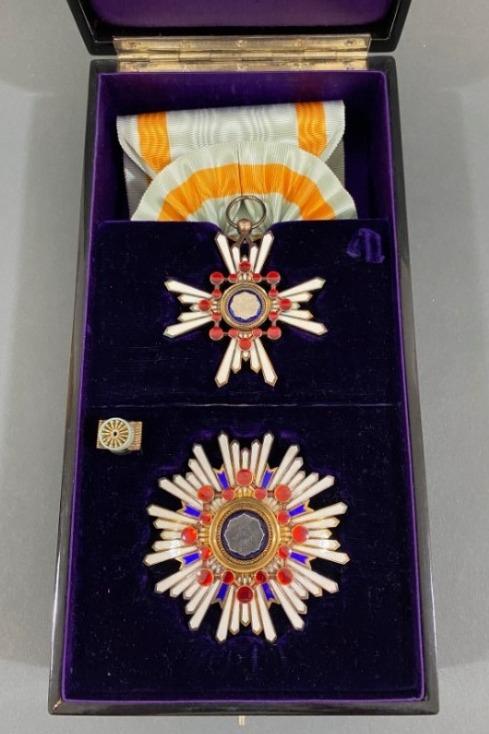
(1).thumb.jpg.38cff8cd9c5d55311a4208b0a83448ba.jpg)
